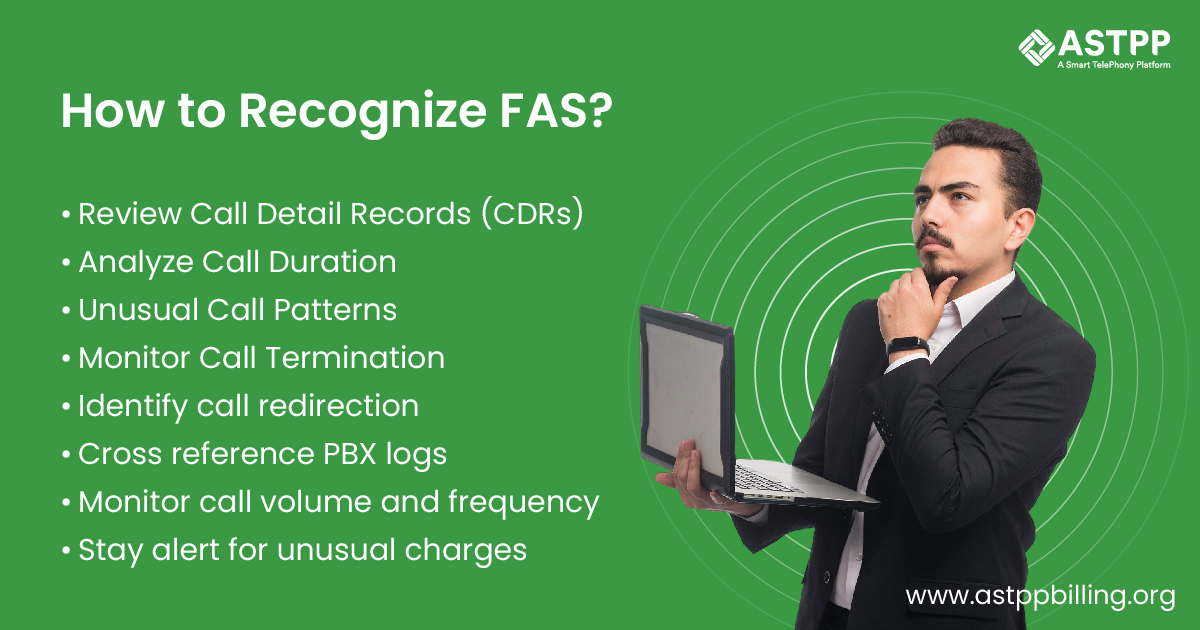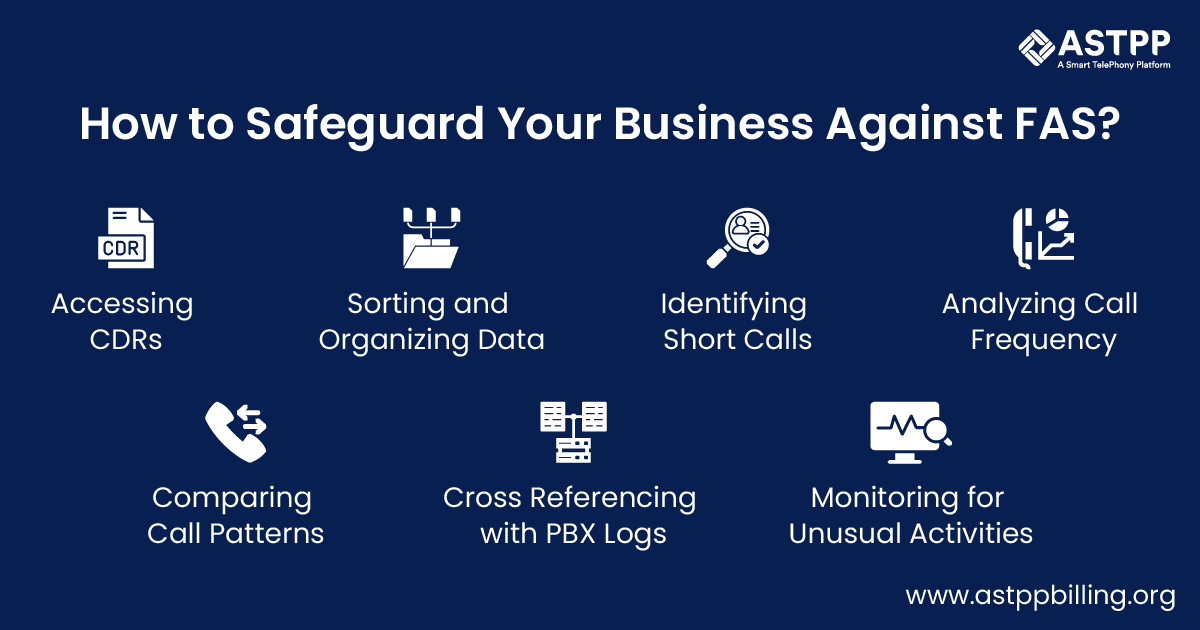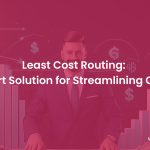FAS (False Answer Supervision) has emerged as a significant concern within the wholesale VoIP industry. Particularly, it is majorly affecting carriers at a global level. In fact, it is one of the most common frauds for businesses even if they are using the best class 4 Softswitch solutions and the latest infrastructure.
In fact, this type of fraud has seen a notable increase in recent years, especially in regions characterized by high termination rates and many competing suppliers. Certainly, there are several efforts made to address the issue. However, there are still many industry professionals who continue to grapple with stable or rising levels of FAS.
Findings from a survey conducted by industry experts reveal that 12% of respondents reported experiencing an uptick in FAS occurrences over the past year. Alarmingly, a staggering 65% indicated that FAS levels had remained constant. Certainly, this emphasizes the persistent nature of this fraudulent activity. In fact, carriers confronted with FAS often face limited options for testing or verifying vendors. As a result, it exacerbates the challenges associated with combating this form of fraud.
Detecting and Preventing False Answer Supervision.
Undoubtedly, the myriad types of fraud bothering the industry, FAS emerges as a particularly insidious threat. In this blog post, we will delve into the intricacies of FAS, shedding light on its implications for wholesale VoIP providers. Furthermore, we will explore effective strategies and solutions, including wholesale VoIP Softswitch solutions. From identifying and resolving this pervasive issue, safeguarding the integrity of communication networks, and mitigating the impact of fraudulent activities.
1. What is FAS?
False Answer Supervision (FAS) is a fraudulent activity prevalent in the wholesale VoIP solution industry, resulting in incorrect billing for callers. Essentially, FAS leads to the billed duration of a call being longer than the actual conversation time. VoIP wholesalers typically perpetrate FAS by manipulating their soft switches to add extra billed seconds to randomly selected calls. This deceptive practice generates substantial revenue for wholesalers but effectively steals money from callers.
FAS is a type of VoIP fraud characterized by the deliberate modification of answer signals to charge for non-conversational time. There are two primary manifestations of FAS. The first involves returning the answer signal when the ringing starts instead of when the customer answers, thereby extending the call duration and cost. In some cases, calls may be charged even if they are dropped due to no answer.
The more insidious variant of FAS employs diversion tactics. Fraudulent carriers route calls to recorded messages that play ringing tones followed by recordings mimicking answers and conversations. This strategy aims to prolong the call duration and maximize revenue by keeping callers on the line for as long as possible.
The impact of FAS goes beyond financial losses. According to estimates by the Global Leaders Forum, fraudulent traffic, including FAS, significantly affects the international wholesale carrier industry. The losses amount to an estimated $17 billion annually. The ramifications of FAS extend beyond mere financial losses for carriers. Moreover, the dynamic and evolving nature of fraudulent activities presents an ongoing challenge for industry stakeholders. Therefore, it necessitates continual efforts to detect and remediate such threats.
2. How Does FAS Work?

False Answer Supervision operates deceptively within the wholesale VoIP business ecosystem. In fact, even if businesses invest in class 4 Softswitch development needs to know this as they can implement better security measures in the solution.
Let’s delve into the mechanics of FAS, uncovering the steps involved in this fraudulent practice. From the initiation of a call to the deceptive tactics employed by wholesale providers, we’ll explore how FAS manipulates billing systems. Certainly, it results in unwarranted charges for unsuspecting callers.
- The subscriber initiates a call that is unaware of potential fraud.
- The service provider seeks the least cost for the call. Therefore, it minimizes costs and directs the call to the least cost routing (LCR) provider.
- This provider forwards the call to a wholesale provider known for competitive rates to high cost destinations.
- Some calls are met with deception. Instead of connecting them, the wholesale provider employs FAS tactics.
- Rather than completing the call, they simulate an answer. As a result, it tricks the system into billing for a nonexistent connection.
- This deceitful practice results in unwarranted charges for unsuspecting callers.
3. Which are the Major Types of FAS?

False Answer Supervision (FAS) comes in various deceptive forms within the wholesale VoIP Softswitch industry. Understanding these nuanced types is crucial for effectively identifying and combating this pervasive fraud.
Silent Charge
In Silent FAS, the connection is secretly established. Certainly, this mimics a legitimate call. However, no audio sound or voice communication occurs between the caller and the callee. Callers are misled into believing they are engaged in a genuine conversation. Moreover, they are unaware that they are being silently charged for the call.
Music-on-Hold
It replaces silence with music or a fabricated recorded message. This would create an impression of being placed on hold. Despite the absence of authentic communication, callers hear these simulated sounds, oblivious to the fraudulent billing taking place. This tactic aims to prolong call duration and increase fraudulent charges.
No RBT (Ring Back Tone)
In this scenario, the caller hears the RBT, which falsely indicates that the call is in progress. However, the actual connection fails to materialize, or no call is established at all. Charges are applied despite the lack of communication. Undoubtedly, it is exploiting the caller’s perception of an ongoing call. This type of FAS capitalizes on the caller’s anticipation of a connected call, despite the absence of genuine communication.
Ring with Charge
This type of FAS deceives callers by generating ringing tones. Certainly, this falsely suggests that the call is being connected. However, the call may not be completed, or the callee may not respond. However, call charges will still be reflected in the class 4 Softswitch solutions even in the absence of successful communication. Undoubtedly, this is a way of tricking callers into paying for incomplete or unanswered calls. This tactic preys on the caller’s expectation of a connected call, leading to unwarranted charges.
Echo FAS
In Echo FAS, callers encounter an echo of their own voice or experience audio feedback during the call. Interestingly, this deceptive tactic creates the illusion of a connected call while imposing charges on unsuspecting callers. By simulating a conversation environment, Echo FAS aims to prolong call duration and maximize fraudulent charges.
Remember, understanding the intricacies of these types of FAS is vital for detecting and mitigating fraud in the wholesale VoIP business. Therefore, it is necessary to be vigilant and informed about these deceptive practices. Certainly, wholesale businesses can protect themselves from financial losses and safeguard their customers’ interests.
4. How to Identify FAS?

Identifying False Answer Supervision requires a vigilant approach. Moreover, it also requires a thorough understanding of the typical characteristics associated with this type of fraud. To help you identify if class 4 Softswitch development of your carrier or any other way is imposing FAS on your wholesale service users, we have jotted down the effective ways.
Review Call Detail Records (CDRs)
Scrutinize the CDRs provided by your VoIP service provider or telecommunications company. Moreover, you can review the patterns of unusually short call durations, particularly those occurring in rapid succession or during off-peak hours.
Analyze Call Duration
Certainly, this is the best way to identify this kind of fraud. That is why VoIP development companies implementing security measures to prevent it put it on the high priority list. All you need to do is pay close attention to the duration of each call.
Often, False Answering Supervision artificially extends the duration of calls to maximize charges. Short duration calls lasting only a few seconds or minutes, especially when repeated frequently, could indicate FAS activity.
Unusual Call Patterns
You should focus on identifying any irregularities or deviations from normal call patterns. This includes sudden spikes in call volume, unusual call destinations, or repetitive calling patterns that do not align with typical business operations.
Monitor Call Termination
You must keep track of how calls are terminated. In FAS scenarios, calls may be prematurely terminated after a brief period. Certainly, that leads to inflated charges for incomplete conversations. Therefore, you must look for instances where calls end abruptly or without any apparent reason.
Identify call Redirection
You can verify whether calls are being redirected to unexpected destinations. Possibly, FAS perpetrators reroute calls to premium-rate numbers or automated systems that simulate conversation. Therefore, it can result in fraudulent charges for the caller.
Cross reference PBX logs
Compare the data from CDRs with logs from your Private Branch Exchange (PBX) system. PBX logs can provide additional insights into call routing and internal usage patterns. Therefore, it helps in identifying discrepancies or suspicious activities.
Monitor call volume and frequency
Undoubtedly, it is essential to keep an eye on the overall volume and frequency of calls within your organization. A sudden increase in outbound calls or an unusual number of incoming calls from unfamiliar numbers could be indicative of FAS attempts.
Stay alert for unusual charges
You must regularly review your telecom bills for any unexpected or unexplained charges. Be wary of discrepancies between billed charges and actual call activity because these may signal fraudulent behavior.
5. How to Protect Business from FAS?

To effectively protect your business from False Answer Supervision, it is essential to conduct a thorough review of Call Detail Records (CDRs) associated with your account. Let us share a detailed breakdown of how to analyze CDRs for signs of FAS:
Accessing CDRs
Certainly, you can start with CDS access. Your VoIP provider must provide you with a CDR. Generally, these records contain detailed information about each call made or received, including the date, time, duration, and destination of the call.
Sorting and Organizing Data
You must organize the CDRs in a spreadsheet or database for easier analysis. Moreover, sort the data based on call duration, time of day, and destination number to identify any patterns or anomalies.
Identifying Short Calls
The next step is to look for instances of short duration calls that deviate significantly from the typical call duration for your business. Generally, short calls lasting only a few seconds or minutes may indicate potential FAS activity. Certainly, these are the incidents where calls are prematurely terminated to generate fraudulent charges.
Read also:- Class 4 Softswitch: Redefining Advantages of Signaling for Wholesale VoIP Business
Analyzing Call Frequency
You must pay attention to the frequency of short calls occurring within a specific time period. For example, calls made during off-peak hours or weekends are potential FAS attacks. Undoubtedly, a high volume of short duration calls clustered within an unusual time frame could be indicative of FAS attempts.
Comparing Call Patterns
You should compare the call patterns observed in the CDRs with historical data from previous billing cycles. Certainly, take a look for any deviations or spikes in call volume or duration that cannot be attributed to normal business operations.
Cross Referencing with PBX Logs
Additionally, cross reference the data from CDRs with logs from your Private Branch Exchange (PBX) system. Undoubtedly, the PBX logs provide insights into internal call routing and usage patterns within your organization.
Monitoring for Unusual Activities
Finally, you have to keep an eye out for any unusual activities or discrepancies in PBX usage. For example, a sudden increase in outbound calls or an unusually high volume of incoming calls from unfamiliar numbers are indicators of false answer fraud.
Concluding Notes
In short, fraud in the VoIP industry is common. Often, service providers, hackers, carriers, and other involved users apply some deceitful activities, which can harm customers and users. FAS is one of the common concerns of VoIP service users.
Certainly, diligent review of CDRs, call pattern analysis, and data cross-referencing with PBX logs can effectively detect and mitigate instances of False Answer Supervision. In short, you can safeguard your business from fraudulent activities and financial losses.
We help businesses deal with FAS effectively with one of the best class 4 Softswitch solutions. To learn more about our offerings, please contact us.





